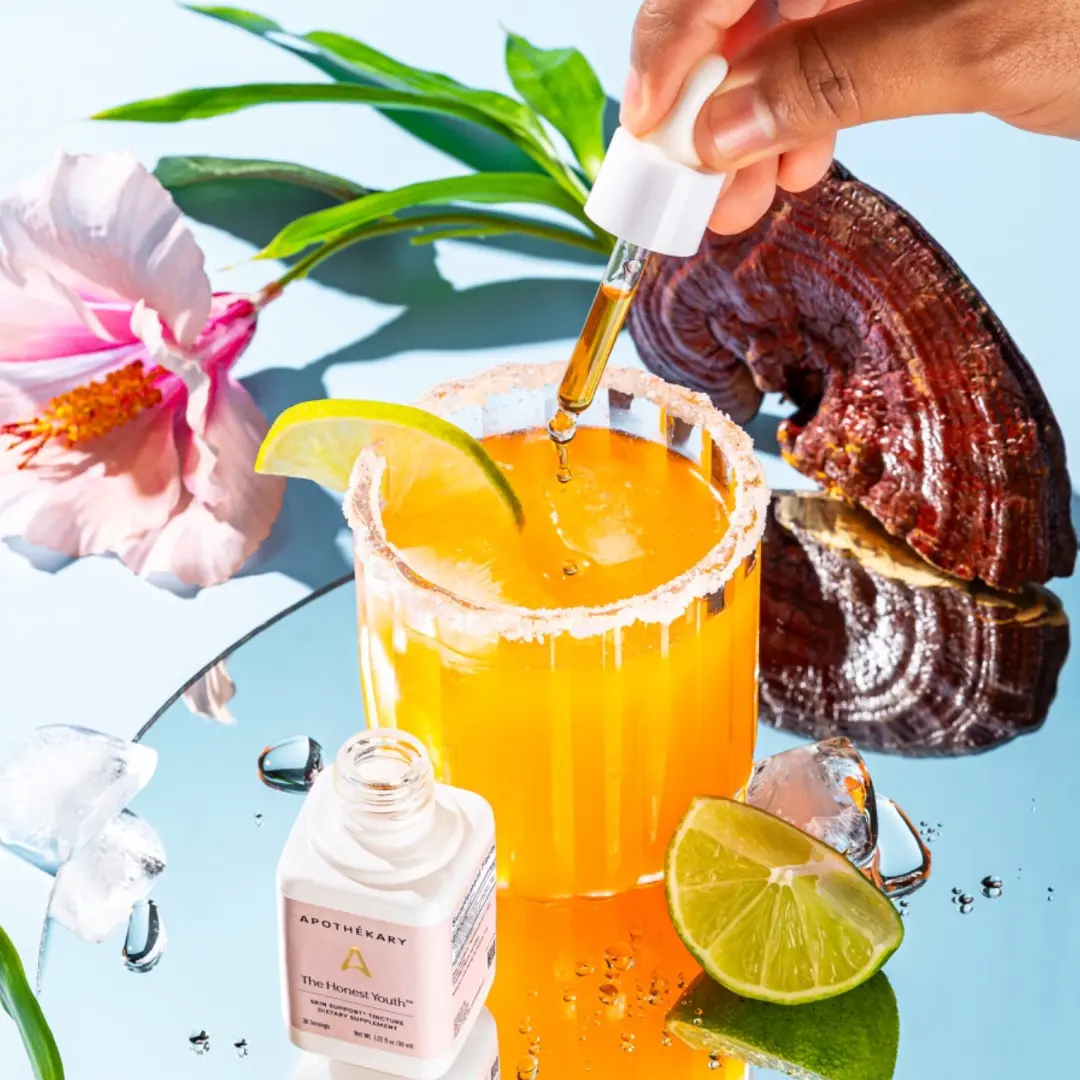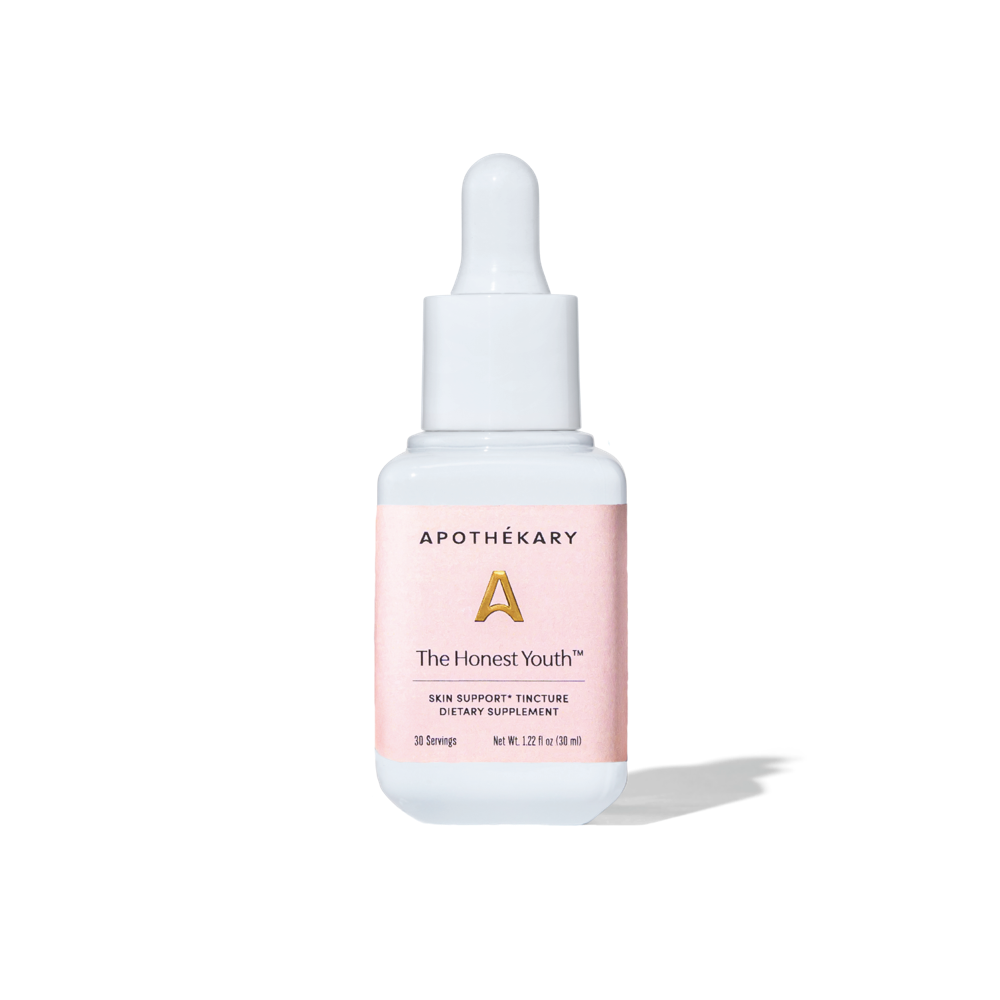
Several key ingredients in The Honest Youth™ have a long history of use in traditional Japanese Kampo medicine, as well as in traditional Chinese Medicine and other traditional Asian systems of medicine
Tremella mushroom is renowned throughout Asian cultures for its beautifying effects
Tremella has centuries of traditional use for health and beauty—blurring the lines between food and medicine. In traditional Japanese Kampo medicine, tremella mushroom is known as “Shiro Kikurage” (シロキクラゲ), which translates to “white tree jellyfish”. In traditional Chinese medicine (TCM), it’s known as “Yiner” or “Baimuer”. Tremella is known by many other names as well, including snow fungus, snow ear, silver ear, white wood ear, white jelly mushroom, chrysanthemum mushroom, and many more. The multitude of names for tremella indicates the widespread recognition of its place in different cultures and medical modalities.
In Japanese cuisine, tremella has a range of culinary applications in foods like desserts, soups, and stews. Tremella is traditionally consumed as Snow Fungus Soup in TCM, to celebrate the Chinese New Year or as needed. It’s often combined with ingredients said to have auspicious meanings and healthful benefits, like red dates and lotus seeds, for “good health and good fortune all in one bowl1.”
Tremella deserves credit for its beauty benefits, as it has centuries of traditional use as a tonic for promoting clear, glowing, blemish-free skin. Behind the scenes, it also has a traditional use for delivering vital energy and health.
In its natural habitat, tremella is part of a complex ecological web. It grows as a parasitic fungus on a saprophytic host, which in turn, grows on a tree. Commercial cultivation of tremella, therefore, requires a similar and unique symbiosis between multiple species.
Japanese Knotweed is a rogue invader and a valuable source of resveratrol
Japanese knotweed is known as itadori or itadori-kon in Japanese (イタドリ), and in TCM as hu zhang. Listed in the Chinese pharmacopeia since 1977, its use dates back thousands of years to the Han dynasty in China. Japanese knotweed root is included in at least 100 prescriptions in the TCM Pharmacopoeia2. The root is also used extensively in traditional medicine in Japan and Korea, and the young spring plant parts are eaten in Japan as a vegetable, sansai (山菜), or mountain vegetable, with a flavor similar to mild rhubarb.
While red wine is often touted for its resveratrol content, a polyphenol associated with many health benefits, red wine contains a fraction of the resveratrol that Japanese knotweed does (between 0.3-0.5 mg / 5 oz glass)3. Japanese knotweed has the highest known natural concentration of resveratrol of any plant, ranging on average from 1-3 mg/gram4.
Japanese knotweed is a highly invasive species resembling bamboo that has been introduced in many parts of the world. It’s extremely difficult to eradicate, causing extensive damage to property and ecosystems. Native to Asia, its ecological niche is a pioneer species revegetating land after volcanic eruptions. It is also an early spring nectar source for honeybees. Because of its invasive status, it is never recommended to cultivate Japanese knotweed in your home garden, but its health benefits give good reason to harvest it from the wild, while also helping to control its spread.
Reishi is prized for being the "Mushroom of Immortality"
Reishi is valued across many medicine modalities, including Japanese Kampo, as well as TCM, Korean, Ayurvedic, and European for its health-promoting and longevity benefits. In Japan, reishi is sometimes called “mannentake” (マンネンタケ), which translates to "10,000-year mushroom".
Reishi has been traditionally valued in TCM for nourishing “shen”, with a calming effect on the mind and spirit, promoting harmony and balance, and enhancing overall wellbeing and vitality or “qi”. Its cherished status is reflected in the fact that it was frequently depicted in paintings and art, often symbolizing good fortune, longevity, and health. Modern research adds to traditional knowledge, showing that reishi is an excellent source of beta-glucans, which are linked to vibrant skin benefits like promoting the skin’s ability to retain moisture, regenerate collagen-producing cells, and protect against environmental stressors, supporting an anti-aging and anti-wrinkle effect.
Unlike tremella mushroom, reishi is not edible due to its hard texture, so it is traditionally consumed as a beverage, powdered, or in pill form.
Traditional Roots for a Beautiful Glow
The traditional Japanese and Asian ingredients in our skin-revitalizing tincture, The Honest Youth™, affirms a time-tested historical precedent of health and beauty benefits that continue to be validated by current research. These cherished ingredients can help skin restore and retain moisture, and smooth blemishes, freckles, and breakouts, all while protecting against UV-induced skin aging, for timelessly healthy-looking, beautiful skin.
https://www.mayway.com/articles/lau-family-recipe-bai-mu-er-tang
https://www.drugs.com/npp/japanese-knotweed.html
https://lpi.oregonstate.edu/mic/dietary-factors/phytochemicals/resveratrol
https://www.sciencedirect.com/science/article/abs/pii/S0378874113003437

